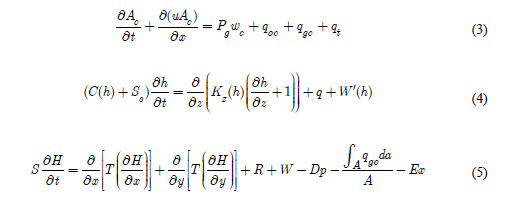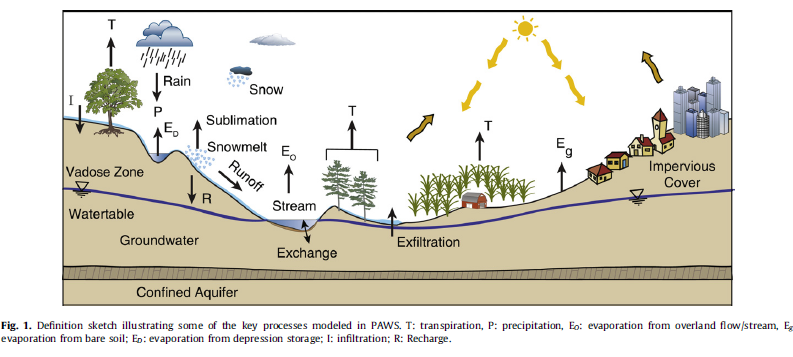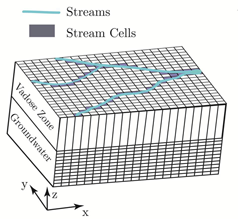PAWS+CLM theory and governing equations
PAWS solves:
- 2D diffusive wave equation for overland flow (Total Variance Diminishing (TVD) Runge Kutta Finite Volume (RKFV) method)
- 1D diffusive wave equation for channel network flow with groundwater exchange (either TVD RKFV and Semi-Lagrangian Semi-Implicit scheme)
- 1D Richards Equation (Picard iteration) coupled with 3D saturated groundwater flow equation (mass-conservative central finite difference) for subsurface flow, using an efficient coupling scheme. Simplifying assumptions (a. no horizontal flow in unsaturated portion of soil; b. evenly distributed lateral flux in saturated portion) allow us to approximate 3D Richards equation at a fraction of the cost of fully 3D Richards solvers
- Wetland depression storage and exchange with overland flow and groundwater
- Two-way exchange between overland flow and channel flow (overland contribution and flooding), between groundwater and channel network


CLM4.0 (Collins et al.,2006; Dickinson et al., 2006; Lawrence et al., 2011; Oleson et al., 2010) solves:
- Surface radiative transfer in canopy and at ground surface (two-stream approximation), considering optical variability among plant species and soil colors and canopy scaling
- Evapotranspiration using resistance approach, considering a two-leaf canopy structure, soil water stress (modified by PAWS)
- Momentum/heat/vapor transfer between land and atmosphere using similarity theories
- Prognostic vegetation structure, biochemical photosynthesis [Farquhar et al. 1980 or Collatz et al 1992], carbon allocation regulated by nitrogen availability, vegetation growth cycle, carbon and nitrogen cycles in vegetation, litter and soil organic matter pools
- snow temperature and hydrology considering impurities and aging, phase change of water in soils
version 1 of the PAWS definition sketch. now the land surface processes are replaced by CLM

PAWS grid sketch:
